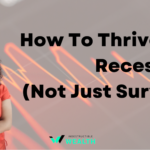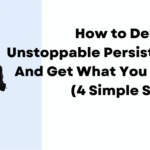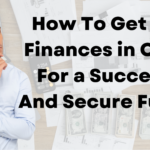Everybody looks for low risk, high return sources of making money. One such interesting avenue is the Convertible Bond – with a nearly 7% guaranteed return with a 10x upside.
In this guide, I’ll explain all you need to know about convertible bonds, including how they work, their pros and cons, and how you can get started investing in them.
Table of Contents
What are convertible bonds?
A convertible bond is a type of fixed-income security that gives investors the option to convert their bond into a fixed number of shares of common stock at a predetermined price. The convertible bond offering provides investors with the option to buy the stock at a discounted price, so if the company’s stock price rises above the predetermined price, the convertible bond can be converted into common stock, potentially providing a boost to overall returns.
How do convertible bonds work?
Convertible bonds have two components: the fixed-income bond component and the option to convert the bond into common stock. The bond component pays a fixed interest rate and has a set maturity date. If the investor chooses to convert the bond into common stock, they forfeit the fixed interest payments but gain the opportunity to benefit from capital appreciation if the stock price increases.
Types of convertible bonds
There are two main types of convertible bonds: mandatory and optional. Mandatory convertibles are bonds that must be converted into shares of stock at a specified date in the future. Optional convertibles, on the other hand, give the bondholder the choice to convert their bonds into stock at a later date. Both types of convertible bonds have their own unique benefits and risks, and it’s important to carefully consider your investment goals and risk tolerance before deciding which type to invest in.
Convertible bonds pros and cons
There are several benefits to investing in convertible bonds, including:
- Capital appreciation potential: Convertible bonds offer the potential for capital appreciation if the company’s stock price increases. This can provide a boost to overall returns and help investors reach their financial goals faster.
- Downside protection: Convertible bonds provide a level of downside protection because even if the company’s stock price falls, the bond’s principal value and fixed interest payments remain unchanged.
- Diversification: Adding convertible bonds to a portfolio can help diversify risk and improve overall portfolio returns. This is because convertible bonds have characteristics of both fixed income and equity securities.
- Lower interest rates: Convertible bonds typically have lower interest rates than traditional bonds because they offer the potential for capital gains through stock ownership. This means investors can achieve a similar level of income with less interest rate risk.
- Lower volatility: While convertible bonds can be more volatile than traditional bonds, they tend to be less volatile than stocks. This means investors can benefit from the potential for capital appreciation while minimizing volatility.
On the other hand, there are also some cons to investing in convertible bonds, including:
- Risk: Like all investments, convertible bonds carry risk. The value of the bond can fluctuate based on interest rates, the stock price of the underlying company, and other factors.
- Value: If the company’s stock price does not rise above the predetermined price, the bond will not be converted into stock and may lose value over time.
- Capital appreciation potential is limited: Convertible bonds have a cap on their capital appreciation potential because the stock conversion price is predetermined.
- Income: Convertible bonds may offer lower yields than traditional fixed-income investments because of their lower interest rates.
How to buy convertible bonds
Now that you understand the benefits of investing in convertible bonds, you may be wondering how to get started. Here’s a step-by-step guide to help you begin:
- Open a brokerage account: You’ll need a brokerage account to buy and sell convertible bonds. Look for a broker that offers a wide range of fixed-income securities and has experience with convertible bonds.
- Research potential investments: Look for companies with convertible bonds that meet your investment criteria. Consider factors such as the company’s financial health, growth potential, and the terms of the bond offering.
- Evaluate the convertible bond terms: Review the terms of the convertible bond, including the conversion ratio, conversion price, maturity date, and coupon rate. Make sure you understand how the terms impact the potential return on your investment.
- Place your trade: Once you’ve selected a convertible bond to invest in, place your trade through your brokerage account. Keep in mind that convertible bonds are often less liquid than stocks or traditional bonds, so it may take longer to buy or sell your investment.
- Monitor your investment: Regularly monitor your convertible bond investment to ensure it continues to meet your investment goals. Consider factors such as changes in the company’s financial health or interest rates that may impact the bond’s value.
FAQs: Convertible Bonds
Are convertible bonds a good investment?
It depends on your investment goals and risk tolerance. Convertible bonds offer an attractive combination of debt and equity investments, allowing investors to access the benefits of both without taking on as much risk as buying stocks alone. However, these bonds are typically more volatile than plain-vanilla bonds, but if you hold them to full maturity then unless the company goes bankrupt, you have a guaranteed coupon rate. Overall, convertible bonds can be a good investment if done right and with adequate research into their potential risks and rewards.
Why would an investor want a convertible bond?
An investor might want a convertible bond because it is a hybrid security that can offer downside protection in the form of fixed income, while at the same time providing potential upside owing to its conversion feature. The conversion option gives investors the right to convert their bonds into equity, thus allowing them to benefit from any appreciation in the company’s stock value. Additionally, convertible bonds may also pay higher interest and yield than non-convertible bonds if they are able to lock in lower borrowing costs for issuers. This makes them an attractive option for investors looking for returns with minimal risk.
What are convertible bonds examples?
A convertible bond is a type of corporate bond that the holder can convert into equity shares in the issuing company. Some examples of convertible bonds are preferred stock and exchangeable bonds. Convertible bonds are attractive to investors because they provide both the fixed income benefits from investing in a bond, and the potential for capital gains if and when it is converted into shares.
Why do companies issue convertible bonds?
Companies issue convertible bonds to provide investors with the option of switching from debt instruments to equity instruments at a later date. This provides companies with access to capital, while also allowing investors the potential for greater returns in the future as their investment value increases. Convertible bonds are typically issued when a company is growing or expanding its operations and needs additional funds but may not be able to get them through traditional borrowing methods. By issuing convertible bonds, companies can appeal to more investors who may see equity-like returns by converting their debt into stocks down the line.
Are convertible bonds better than bonds?
In my opinion, yes, because you get the benefits of a regular bond – safety, predictability, regular interest income – with the additional upside of an equity. It’s like flipping a coin and heads, you win, and tails, you don’t lose.
Are convertible bonds good for inflation?
Convertible bonds can be beneficial in inflationary environments as they provide a fixed coupon rate on the principal. This means that even if the inflation rate increases, the bondholder’s return remains unchanged. Additionally, convertible bonds may offer protection against downside risk due to their ability to convert into equity which can appreciate over time. Inflation-linked bonds are also available which provide coupon payments that rise or fall with inflation so could also be used as an inflation hedge.
What happens to convertible bonds when interest rates rise?
When inflation rises, the yield of convertible bonds may become attractive to investors since they can convert their bonds into stocks. This increased demand for the bonds can lead to higher prices and lower yields, making it beneficial to those who hold them. Additionally, when inflation rises, the value of the stock that is eventually converted from a bond is often worth more than what originally was invested due to the increase in prices during periods of high inflation.
Why is it difficult to value a convertible bond?
Valuing convertible bonds is difficult because they have both debt and equity characteristics, meaning their value can be affected by both the stock market and interest rates. Additionally, the value of the bond depends on its conversion ratio, which is determined by a number of factors such as current stock price, dividend payments, and volatility. Further complexities arise from embedded options in convertible bonds that can make calculating values more complicated.
Conclusion
You’ll not regret investing in convertible bonds. You get low risk, good returns, steady growth, and stability all at once – what more can you ask for as an investor! This asset class is my more preferred hand when it comes to minimizing investment downsides. They get you 7% guaranteed with a 10x upside. You can get started too, you just need to be ready to embark on a long, fruitful, patient journey.
Whenever you’re ready, there are 3 ways I can help you level up your finances:
- Take an affordable self-learning e-course: COMING SOON
- Take our new interactive course The Indestructible Wealth Academy to help you buy ten cash flowing properties within two years, with the goal to create a million in equity: COMING SOON
- Ready to invest your money?
→ Buy cash flowing, turnkey real estate. It’s acquired, renovated, and managed for you by my company, High Return Real Estate.
→ Wish you had bought bitcoin back at $12,000? Now you can with my company Simple Crypto Mine. We provide the machines, the hosting, the technical expertise, and the maintenance. Watch bitcoin drop in your wallet every five days for another stream of passive income. Email me at [email protected] to request the investor packet.
→ Are you an Accredited Investor with larger amounts of capital to invest? Syndicated deals in self-storage and car washes are 100% passive and very lucrative. Email me at [email protected] to request the latest investor replay to learn more!





